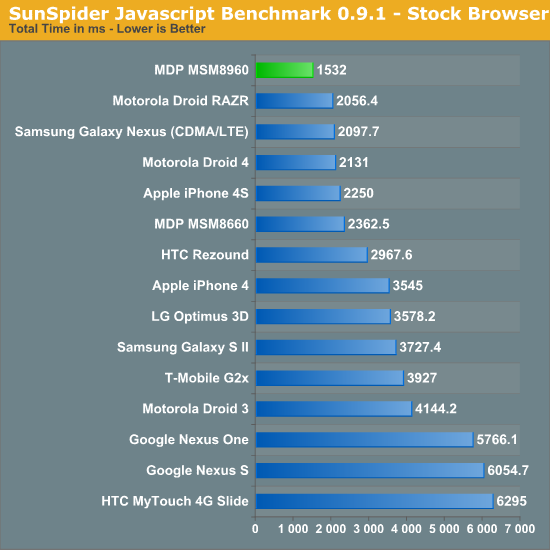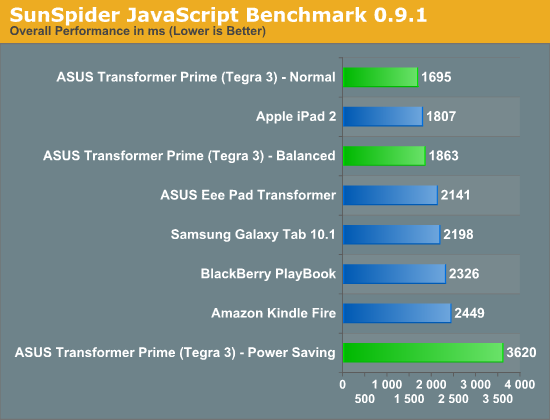french toast
Veteran
Before i get shot down in a ball of flames, i know they are aimed at different markets, and for the most part are not designed to face off against each other, however seeing as Piledriver is AMD's CPU architecture going forward, Cortex A-15 is ARM's 'Daddy core' and they will probably both end up in some kind of W8 Tablet/Netbook i think its worth a look..just for the hell of it.
Bulldozer has less than stella IPC over the Phenom 2 class..(best case on par) as it was designed with different parameters in mind..such as; Fitting more threads efficiently onto a small die area, intergrating CPU's/GPU's on die together in a 'modular' approach and increasing clock speed..whilst keeping IPC on par with K10.5..(hope ive sumised that correct phew!)
Cortex A15 on the other hand is ARM's effort in trying to build a much more powerfull and complex CPU to what it had done in the past.
Sort of like a mini K10.5 core..(According to Aruns article..they have some similarities) how far then would A15 be behind in IPC over a Piledriver core on both outright performance and performance per watt...
-Cortex A-15 quad with 4mb L2 cache,@2.5ghz...
-2 Pileriver modules with comparable cache setup (no L3) @2.5ghz...
-Both with comparable dual channel 64bit ddr3 setups...
-Assuming built on Global foundary's 32nm gate first HKMG process...
-Assuming ULTRABOOK form factor with 17w TDP (as a guide)
-Both hypothetical systems running Windows 8 Metro.
Im not knowledgeable enough to answer this question my self..but there are plenty on here willing to get stuck in im sure .. discuss.
.. discuss.
------------------------------------------------------------------------------------------------------------------------------------------------------
EDIT 1; To clear up some confusion, this is about the CPU's them selfs, assuming both ultrabooks use W8 METRO.
EDIT 2; Of course Cortex A15's are designed to be used with Cortex A7's in big_LITTLE... which would warp the power consumption for general use considerably for ARM.
On the other hand to be fair, others would argue that Bulldozer is designed to work alongside AMD graphics in an Ultrabook form factor....so for now we leave them both out of the equation and just assume Default Nvidia graphics IP.
EDIT 3; Through discusions on this thread it has become clear that the Cortex A-15 v AMD Bulldozer IPC comparison....while related, is a seperate discusion in its own right to whether A-15 or BD is a better architecture for Ultrabooks.
Still, its best to use a 17w tdp for the IPC comparison..for a guide as the X86 core can scale to over 100w TDPs/4.2ghz and 16mb of total cache...which wouldn't be any where near fair, and would never face off against each other.
Bulldozer has less than stella IPC over the Phenom 2 class..(best case on par) as it was designed with different parameters in mind..such as; Fitting more threads efficiently onto a small die area, intergrating CPU's/GPU's on die together in a 'modular' approach and increasing clock speed..whilst keeping IPC on par with K10.5..(hope ive sumised that correct phew!)
Cortex A15 on the other hand is ARM's effort in trying to build a much more powerfull and complex CPU to what it had done in the past.
Sort of like a mini K10.5 core..(According to Aruns article..they have some similarities) how far then would A15 be behind in IPC over a Piledriver core on both outright performance and performance per watt...
-Cortex A-15 quad with 4mb L2 cache,@2.5ghz...
-2 Pileriver modules with comparable cache setup (no L3) @2.5ghz...
-Both with comparable dual channel 64bit ddr3 setups...
-Assuming built on Global foundary's 32nm gate first HKMG process...
-Assuming ULTRABOOK form factor with 17w TDP (as a guide)
-Both hypothetical systems running Windows 8 Metro.
Im not knowledgeable enough to answer this question my self..but there are plenty on here willing to get stuck in im sure
------------------------------------------------------------------------------------------------------------------------------------------------------
EDIT 1; To clear up some confusion, this is about the CPU's them selfs, assuming both ultrabooks use W8 METRO.
EDIT 2; Of course Cortex A15's are designed to be used with Cortex A7's in big_LITTLE... which would warp the power consumption for general use considerably for ARM.
On the other hand to be fair, others would argue that Bulldozer is designed to work alongside AMD graphics in an Ultrabook form factor....so for now we leave them both out of the equation and just assume Default Nvidia graphics IP.
EDIT 3; Through discusions on this thread it has become clear that the Cortex A-15 v AMD Bulldozer IPC comparison....while related, is a seperate discusion in its own right to whether A-15 or BD is a better architecture for Ultrabooks.
Still, its best to use a 17w tdp for the IPC comparison..for a guide as the X86 core can scale to over 100w TDPs/4.2ghz and 16mb of total cache...which wouldn't be any where near fair, and would never face off against each other.
Last edited by a moderator:



